Part I of an Old New York Cat Story

Like most cats that became the popular mascots of New York City police stations, fire stations, hotels, and theaters in the 1800s and 1900s, Jim began his life as a vagrant cat without friends or influence. It didn’t take him long, however, to win the hearts of the managers, actors, and patrons of the old Union Square Theatre.
In fact, one might say he literally stole the show.
As a reporter for the Detroit Free Press wrote in a feature story about the cat on August 14, 1887, Union Square Jim was “either an exceptional cat or a proof of my ignorance concerning the kind.” The reporter noted that the large sorrel cat (think “Morris” from the old 9-Lives commercials) was first and foremost a sociable cat who loved human companionship.
Jim made his home under the stage of the Union Square Theatre at 58 East 14th Street (between Broadway and Fourth Avenue), which at that time was under the management of James M. Hill. His favorite person was janitor Michael Sweeney, but he also enjoyed visiting all the members of the acting companies in their dressing rooms before every performance.
Jim could also do quite a few tricks – for example, he could “sing,” shake paws, and stand on his hind legs — and he found himself in the spotlight on more than one occasion. Let’s just say that Jim had a knack for turning a sorrowful and serious drama scene into a comedy act that brought down the house with laughter and howls of delight.
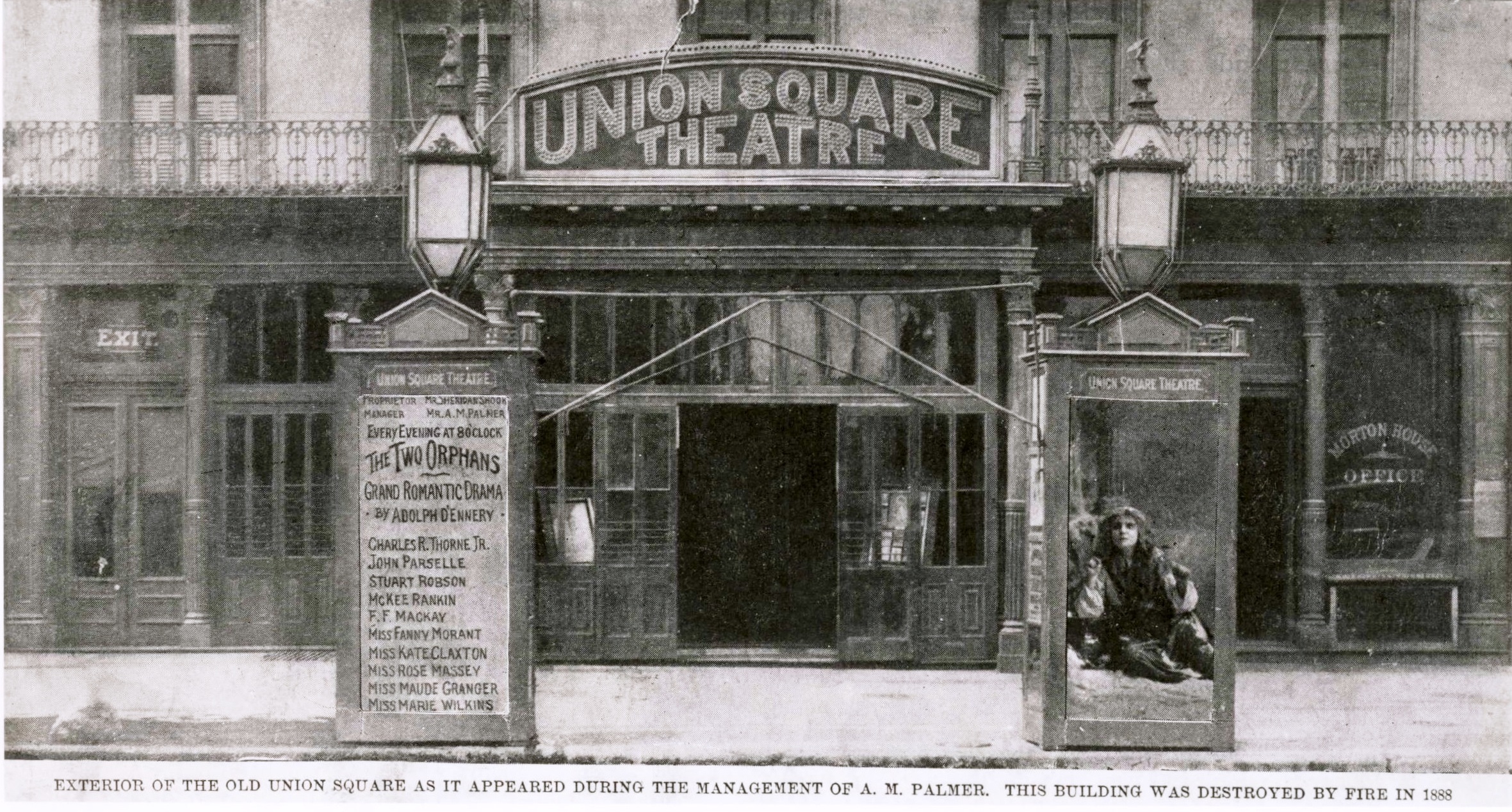
Our story begins in 1886, in an unused dressing room at the Union Square Theatre. There, according to the book “Lady Lee and Other Animals Stories” by Harmon Lee Ensign, a quiet brindle cat named Roxy gave birth to five kittens. The kittens were discovered by janitor Henry Sweeney, who cared for the mother cat for several weeks so she in turn could feed her kittens.
According to Ensign’s version of the story, the mother cat was severely injured (broken ribs and other injuries) when a disgruntled actor kicked her against a corridor wall. Although she suffered greatly, Roxy cared for her kittens for five more days until she passed away.
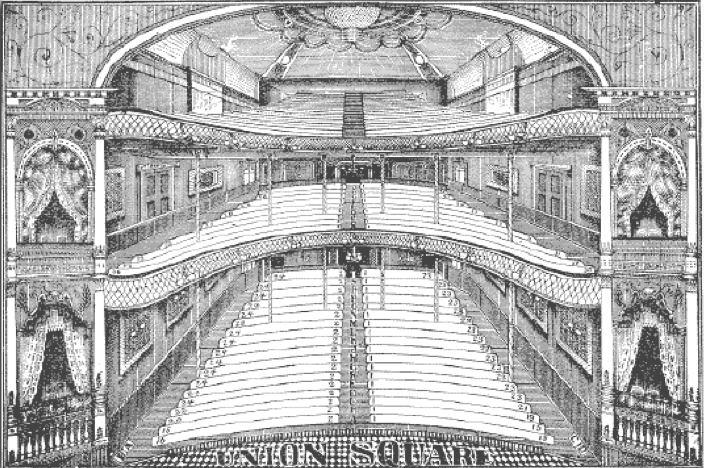
Within a few days, four of the five kittens also died (Henry tried to save them, but he did not know how). The smallest survived, and within a few weeks, poor little Jim was a bright and mischievous kitten.
Now, I have no historical proof of this specific part of the story — author Ensign, a New York animal rights supporter and philanthropist, may have taken liberty to embellish the tale of Jim’s birth for his book — but it makes for a good narrative.
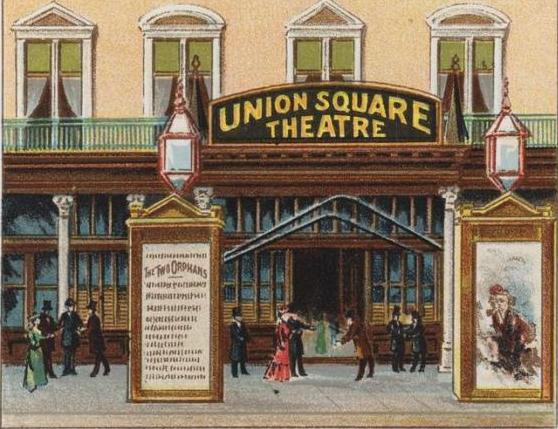
As a kitten, Jim spent most of the day under the stage, either in the dark passageways or in the dressing room. At night, after the final curtain came down and the crowds dispersed, Jim would follow Henry on his janitorial rounds. Man and cat would walk together from the cellar, where the scenery was stored, to the roof, where the moonlight came streaming through the skylights.
During their time together, Henry taught Jim many tricks, like standing erect, walking and “boxing” on his hind legs, and flicking his tail to the left or right on command. Jim was quite intelligent, and over time he also learned how to put on a show by weeping in mock mews, posing like different actors, and performing numerous acrobatic tricks.

A few months after his first birthday, Jim was introduced to the theater proper, where he mingled with stagehands, actors, and other prominent people of the New York theater world. He was cuddled and coddled by his admirers and friends, who all considered him the mascot of the institution. And he was welcomed by Union Square Theatre manager James Hill, who considered him a good-luck charm for the theater (Jim would discharge any employee who tried to harm the cat, after giving the employee a lecture on animal cruelty).
One of Jim’s biggest fans was Madame Helena Modjeska, a renowned actress who specialized in Shakespearean and tragic roles. She gave him a wicker cradle stuffed with rich bedding materials. Jim was quite partial to this bed, and reportedly would not sleep anywhere else.
Jim also had a lady admirer in Bangor, Maine, who once sent him a plump package of catnip, which, according to The New York Times (February 19, 1888), he enjoyed “with the relish of an epicure.”
Union Square Jim Makes His Stage Debut
On September 26, 1887, The Henrietta, a romantic comedy written by Bronson Howard and produced by the comedians Stuart Robson and William Henry Crane, opened at the Union Square Theatre. Jim also chose to make his debut on the stage that night. According to a story in The New York Times, Jim got a bit frisky on stage and almost spoiled a scene.
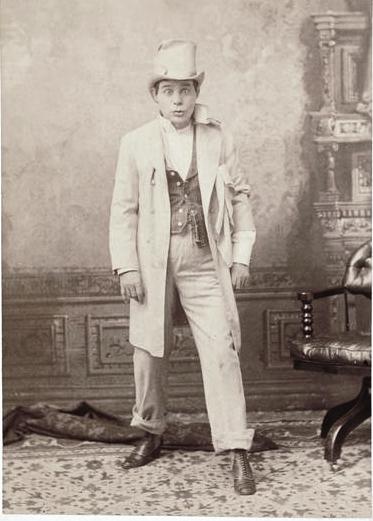
Robson and Crane were angry at the large orange tabby at first, but they came to love Jim over the next few months. They even offered to buy Jim from Manager Hill and sought to have his name changed to Henrietta. Mr. Hill had to decline because one, Jim was a male, and two, he brought good luck to the theater (at least up to that time…)
A Brief History of the Union Square Theatre
In 1871, Sheridan Shook, a former butter and cheese merchant and collector with the Internal Review Service under Abraham Lincoln, signed a ten-year lease with Courtlandt Palmer, a wealthy hardware merchant and real estate speculator who owned what was then called the Union Place Hotel.
Shook renamed the hotel the Maison Doree and hired chief constructor H.M. Simons to build a variety (vaudeville) theater within the walls of the hotel. Construction began on May 1, 1871, and in a few months, a a 55- x 140-foot theater that could seat about 1,500 people replaced what had been the grand dining room of the Union Place Hotel.
The main entrance to the theater was on 14th Street and a separate entrance to the gallery and stage was on Fourth Avenue.
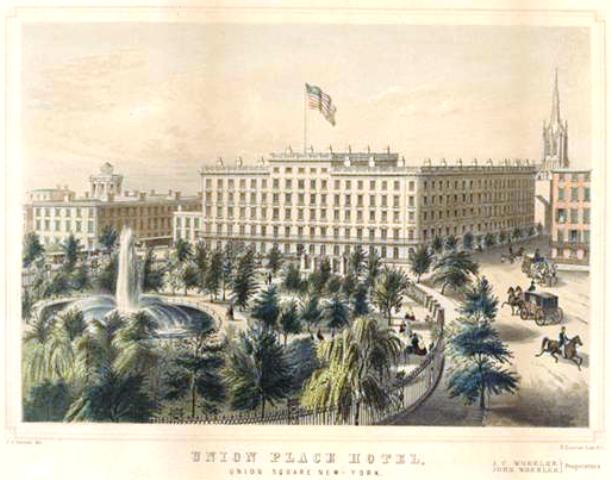

The new theater opened on September 11, 1871, under the management of Robert W. Butler, a variety manager and former proprietor of the American Concert Saloon at 414 Broadway. One year later, Albert M. Palmer, Shook’s clerk at the IRS, took over. Under Palmer’s management, the theater operated as the Union Square Theatre Stock Co.
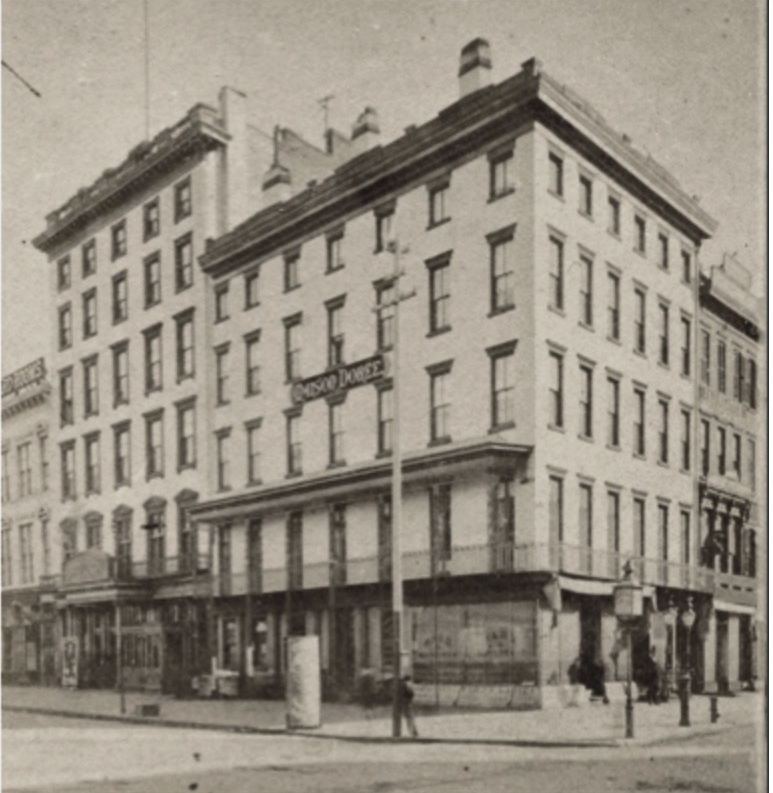
The Old Peter Stuyvesant Farm
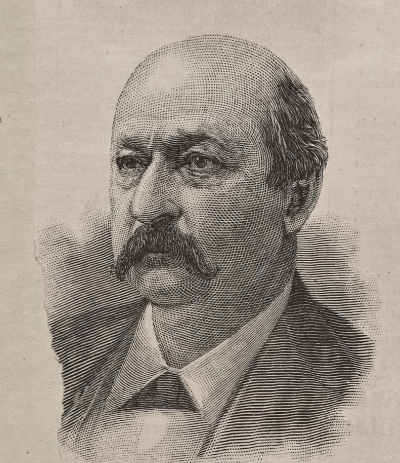
The land on which the Union Place Hotel and adjunct Union Square Theatre occupied was once part of a 33-acre farm owned by Cornelius T. Williams, the son of Mary Magdalene Tiebout and Edward Williams, and the stepson of the late Cornelius Tiebout, a New York merchant.
Tiebout had acquired the land in 1748 from one of Peter Stuyvesant’s heirs. He built a farmhouse near the present-day intersection of East 18th Street and Park Avenue South, and named his estate Roxborough.
The land had originally been conveyed to Stuyvesant in 1651 by the Dutch West India Company. Stuvesant’s farm extended from the Bowery to the East River between present-day East 3rd Street and East 30th Street.
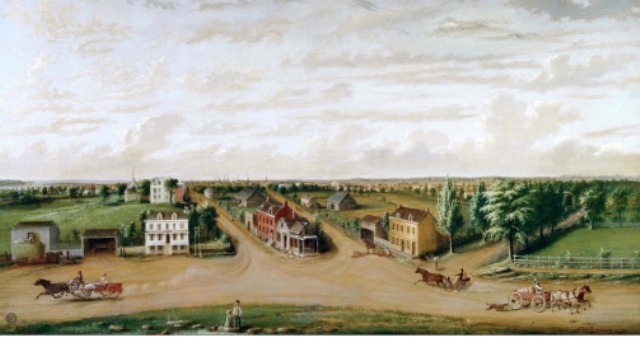
In 1811, when the Commissioners’ Plan established Manhattan’s street grid, the area around Union Square was mostly farmland, as pictured above. In addition to the grid, the Commissioners’ Plan provided for a public square called Union Place at the intersection of the Bowery and Broadway, just to the west of the Williams’ property. In 1832, additional land was acquired for the park, which opened to the public as Union Square in 1839.
The Final Years of Jim and the Union Square Hotel
In Part II of this Old New York cat tale, I’ll share some more amazing stories about Jim, the Union Square Theatre cat, and about the final years of the old hotel.




Really interesting story! I always love how you merge the animals’ stories with New York history.
Glad you enjoyed it! Part II is coming soon, so stay tuned to see what am amazing cat Union Square Jim was!
[…] Part I of the Old New York cat story, we met Union Square Jim, the large, blue-eyed, orange tabby mascot of the old Union Square Theatre […]